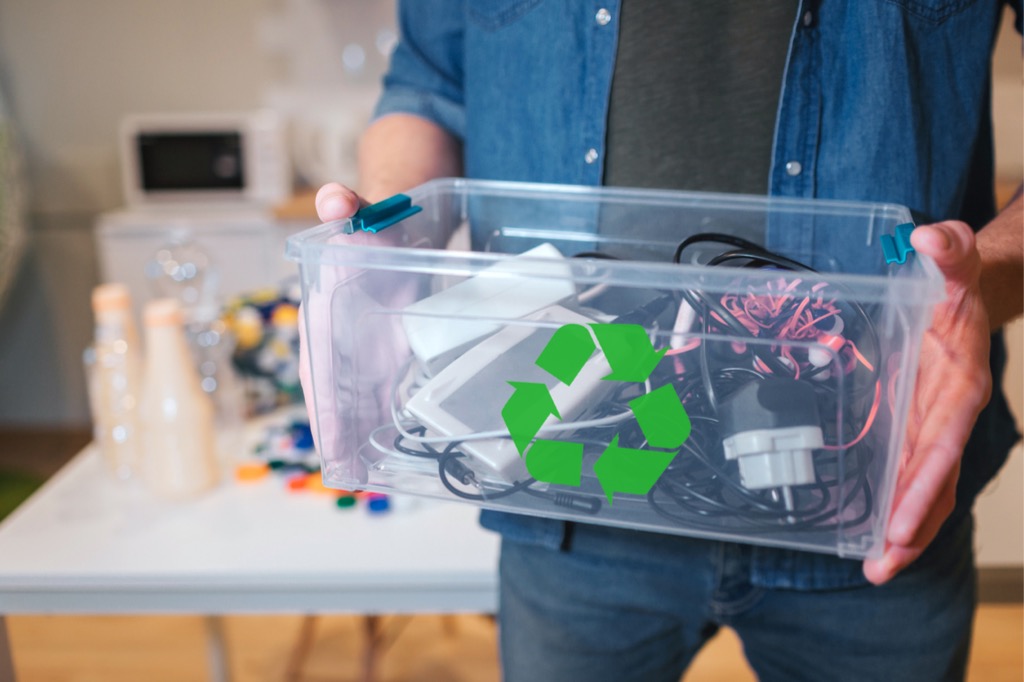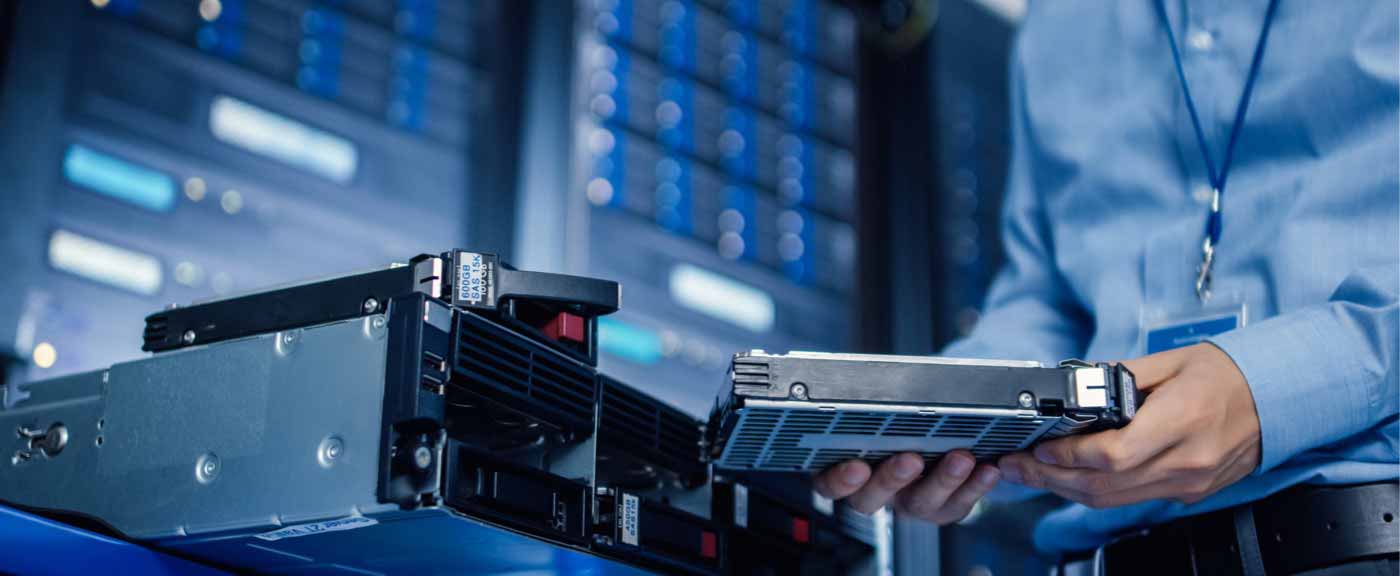Protecting the Environment with E-Waste Management
Introduction
With the advances in computing and the development of “smart” devices, technology is expanding to encompass all walks of life. Prices are dropping, and electronic devices are in high demand across the globe as more and more people go digital. However, the life span of devices is getting shorter, bringing with it the problem of electronic waste management, as consumers frequently dispose of old equipment in favour of new models.
In this article, we’ll be taking a deep dive into the issue of e-waste management and considering some of the best ways for dealing with it.
The Definition of E-Waste Management
Electronic waste or e-waste is a generic term for electronic gadgets and IT equipment that has become obsolete or has reached the end of its useful life. It is also known as “e-scrap” or “end-of-life electronics.”
Electronic waste includes a wide range of devices and infrastructure components, including desktop computers, laptops, mobile phones, televisions, home appliances, gaming systems, smart gadgets, and Internet of Things (IoT) devices.
These digital and electronic devices typically consist of different materials, including copper, gold, silver, platinum, and other valuable metals. They often contain toxic substances like mercury, lead, PVC plastics, and hazardous compounds like brominated flame retardants.
These harmful substances make it dangerous to dispose of electronic waste in dumpsites and landfills. These items break down over time, and chemicals can leech into the soil and groundwater reservoirs, resulting in environmental or health hazards that can result from the leaching of toxic substances into these ecosystems.
This is why proper e-waste management is a priority and is being been written into law in many countries.





See how much your IT equipment is worth
The Importance of E-Waste Management
Over half of all households worldwide now have internet access, and close to 8 billion people have cell phones. This has driven device manufacturers and infrastructure providers to design their products for rapid redundancy. New models and software platforms are rolled out at regular intervals enticing consumers to abandon their “old” equipment to keep up with the latest upgrades. Some providers withdraw support for previous platforms to encourage this buying.
All of that upgraded or obsolete equipment has to go somewhere — and responsible electronic waste management is the best solution for dealing with an escalating problem. This year alone, it’s estimated that more than 57 million tons of e-waste will be generated and discarded.
E-waste management isn’t only concerned with the safe disposal of electronic waste — it also includes methods like recycling and reuse. As the US Environmental Protection Agency (USEPA) famously put it, “One metric ton of circuit boards can contain 40 to 800 times the amount of gold and 30 to 40 times the amount of copper mined from one metric ton of ore in the United States.”



The concept of “urban mining” — reclaiming and reusing materials from discarded products and electronic waste — is an environmentally and economically sound practice that emphasizes the importance of responsible electronic waste management.
Several research papers and in-depth studies of the economic and environmental implications of e-waste management have been published. If you search on the terms” importance of e-waste management pdf” into your browser, you can get a list of the latest statistics and analysis.
Opportunities for Improved E-Waste Management
Electronic waste is now a global problem. For example, an indeterminate volume of used electronic material is routinely exported from North America and other developed nations to developing economies for disposal. These nations often lack the capacity and infrastructure to deal with this material safely. Solutions to e-waste management must be implemented on an international level to ensure the problem is not just being transferred to underdeveloped nations.
Organizations like TERI are using their capabilities in research, policy, consultancy, and implementation to work across various sectors to promote the efficient use of resources, to reduce human impact on the climate and environment.
Recycling is a key activity and occurs at both formal and informal levels.
Formal recycling, e-waste management involves disassembling electronic goods and systematically separating and cleaning their constituent materials by category. This is the type of recycling process typically associated with specialist recycling centres. It’s an expensive process requiring advanced technologies and is normally the province of large multi-national enterprises and developed nation governments.



Men, women, and children in developing economies often engage in informal recycling. This typically involves dismantling electronic equipment by hand, burning devices to melt away non-valuable materials, and to use mercury or acids to recover gold or other valuable materials.
While providing a source of income for local entrepreneurs, these informal methods are not safe. Several initiatives have been proposed to enable technology transfer from developed economies to recyclers in the informal sector. Other schemes provide financial incentives (over what can be realized through informal recycling) for local entrepreneurs to take discarded electronics to formal recycling centres.
National Strategy for Electronics Stewardship
In July 2011, an Interagency Task Force on Electronics Stewardship established by the US government of then-President Obama released a report from the National Strategy for Electronics Stewardship (NSES). This initiative had several objectives, including promoting “greener” designs for electronic goods, an increase in domestic recycling, and the reduction of e-waste exports to developing countries.
The NSES draws from the collaboration of 16 federal departments and agencies and stakeholders that include the electronics, retail, and recycling industries, environmental organizations, state and local governments, and concerned citizens.



Make an Informed Decision
Governments, City Administration, and Citizens can Help in E-Waste Management
As initiatives like NSES demonstrate, Federal and provincial governments, city administration, and citizens are responsible for electronic waste management. There are many schemes that currently contribute to this e-waste management activity.
In Canada, for example, Ronin8 has developed a technology that uses a minimal amount of water and energy to separate metals from non-metals through sonic vibrations in recycled water. This has fuel and resource-saving implications for the future scope of e-waste management.
Another example is a copper smelting plant in Rouyn-Noranda, Quebec, which provides economic recycling at a large scale. The molten copper acts as a high-temperature solvent for e-waste, dissolving precious metals like silver, gold, platinum, palladium, and selenium, which can be later separated out. The smelter takes in about 50,000 tons of e-waste each year.






See how we can solve your hard drive destruction needs
E-Waste Management with TechReset
TechReset is the industry’s most experienced and trusted computer recycling provider and a proponent of green IT recycling. As an ISO 14001 Environmental certified institution, we have a zero-landfill initiative policy.
Our smart, secure solutions for your equipment and data can turn your older and surplus IT equipment into usable equipment. Our commitment to redeployment uses the best practices in the industry to evaluate, sort, and salvage inventory that can be repurposed either within your organization or elsewhere. This process enables the continued use of older IT equipment that has been data sanitized, tested, refurbished, and repackaged.
We strive to limit the environmental impact caused by IT equipment that has been disposed of improperly. More than 90% of the equipment we recover is resold, repurposed, or donated.
Contact us to learn more.


